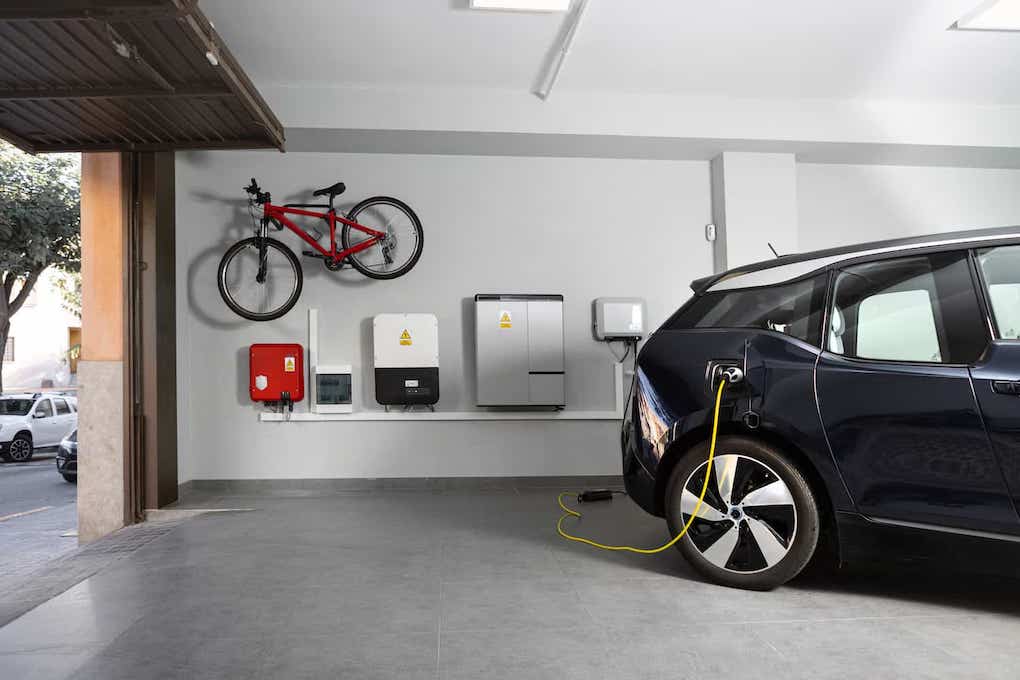
As California continues to spearhead the transition to a sustainable and eco-friendly future, the focus on electric vehicles (EVs) has become increasingly prominent. With a burgeoning population of electric cars on the roads, the need for convenient and accessible charging infrastructure is paramount. In this blog, we’ll explore the landscape of installing EV chargers in homes across California, delving into the benefits, challenges, and the pivotal role homeowners play in fostering a cleaner, greener transportation ecosystem.
- The Rise of Electric Vehicles in California:
California has emerged as a leader in the adoption of electric vehicles, driven by a combination of environmental consciousness, government incentives, and the innovative spirit of the state. With major automakers investing heavily in electric models and the state’s commitment to phasing out internal combustion engine vehicles, the demand for EVs is on the rise.
As more Californians make the switch to electric vehicles, the need for a robust charging infrastructure, especially at home, has become increasingly apparent. Installing EV chargers in residential settings is not just a convenience but a strategic move to support the growing fleet of electric cars and contribute to the state’s ambitious carbon reduction goals.
- Convenience and Accessibility at Home:
One of the primary advantages of installing an EV charger at home is the unparalleled convenience it offers. Home charging allows EV owners to start each day with a fully charged battery, eliminating the need for frequent visits to public charging stations. This not only saves time but also ensures that the vehicle is always ready for daily commutes or impromptu road trips.
Moreover, having a home EV charger provides a sense of control over charging schedules. Homeowners can take advantage of off-peak electricity rates, optimizing the cost-effectiveness of charging their electric vehicles. This level of convenience and flexibility makes EV ownership more appealing and practical for a diverse range of Californians.
- Government Incentives and Rebates:
California’s commitment to promoting clean transportation extends to substantial incentives and rebates for homeowners installing EV chargers. Programs like the California Clean Vehicle Rebate Project (CVRP) offer financial incentives to individuals who purchase or lease eligible electric vehicles. Additionally, the state provides incentives for the installation of home charging stations through programs such as the Clean Vehicle Assistance Program (CVAP).
These financial incentives significantly offset the costs associated with purchasing and installing EV chargers, making it more accessible for homeowners to embrace electric mobility. As the state continues to encourage the adoption of electric vehicles, these incentives serve as powerful motivators for homeowners to invest in home charging infrastructure.
- Increased Property Value:
Beyond the immediate benefits of convenient charging and government incentives, installing an EV charger at home can positively impact property values. As electric vehicles become more mainstream, homebuyers are increasingly considering the availability of charging infrastructure as a desirable feature.
Homes equipped with EV chargers are not only seen as environmentally conscious but also as forward-thinking and prepared for the future of transportation. This added amenity can set a property apart in a competitive real estate market, potentially increasing its market value and appeal to a broader range of buyers.
- Contributing to a Sustainable Future:
One of the central motivations behind California’s push for widespread EV adoption is the commitment to reducing greenhouse gas emissions and combating climate change. By installing EV chargers at home, homeowners actively contribute to this collective effort.
Charging electric vehicles with clean, renewable energy at home further enhances the environmental benefits of EV ownership. Many Californians with solar panels on their homes can harness the power of the sun to charge their electric vehicles, creating a closed-loop system of sustainable energy use.
- Overcoming Challenges:
While the benefits of home EV chargers are clear, some challenges exist. The upfront costs of purchasing and installing charging equipment can be a deterrent for some homeowners, even with available incentives. Additionally, the variability in home infrastructure may require electrical upgrades, adding to the overall installation cost.
Addressing these challenges requires a combination of targeted incentives, public awareness campaigns, and collaborations between the government, utility companies, and the private sector. Streamlining the installation process and ensuring that homeowners have access to accurate information about the costs and benefits of home EV chargers are crucial steps in overcoming these challenges.
- The Future of Home EV Charging in California:
As the electric vehicle market continues to evolve, the future of home EV charging in California looks promising. Ongoing advancements in battery technology, increased collaboration between automakers and charging infrastructure providers, and continued government support will likely drive further innovation and accessibility.
The integration of smart charging solutions and the development of energy storage systems will play a pivotal role in optimizing home EV charging. Smart charging allows homeowners to manage and monitor their charging stations remotely, optimizing energy consumption and costs. Energy storage systems, such as home batteries, provide an additional layer of resilience, allowing EV owners to store excess solar energy for later use.
Conclusion:
Installing EV chargers in homes across California is not just a trend; it’s a strategic investment in a sustainable and cleaner future. Homeowners play a vital role in shaping the landscape of electric mobility, contributing to the state’s ambitious climate goals and fostering a more resilient and eco-friendly transportation ecosystem.
The convenience, financial incentives, and environmental benefits associated with home EV chargers make them a compelling option for Californians seeking to embrace electric mobility. As the state continues to lead the charge in electric vehicle adoption, the installation of EV chargers at home will become an integral part of the broader effort to create a greener, more sustainable California.
